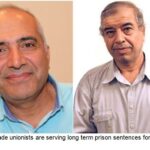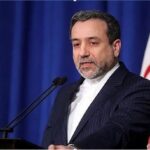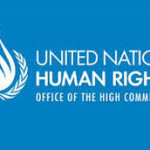
Seventy years after the coup in Iran overthrew the democratically elected government, former British Foreign Secretary, David Owen, has described the event as being orchestrated by British Intelligence to safeguard British imperialist interests in Iran’s oil resources.
With the active involvement of the CIA, Dr Mohammad Mossadegh’s secular progressive government was replaced by a dictatorial monarchy headed by the Shah on August 19,1953. This was subsequently ended by a mass uprising in 1979 demanding change. But the years of brutal dictatorship had severely undermined the secular opposition while the Islamists were accommodated.
Today, Iran is once again under the heel of an inhumane dictatorship. However, the clerical leaders of the theocratic regime are increasingly fearful of their own population and desperate to hold on to political and economic power.
Under the clerical regime, Iran has become a deeply polarised society. Unemployment, under employment and poorly paid employment means that many families cannot afford food and other basics of life. It is estimated that in today’s Iran 80% of workers live under the poverty line.
Even the London-based Financial Times has reported that, despite the Tehran government largely keeping economic statistics under wraps, prices are spiralling to record levels. Inflation is officially acknowledged to be 47.7% and rising, but many Iranians know from day-to-day experience that it is much, much higher.

In response, the regime’s desperation is growing, especially since the latest nationwide protests by workers, students, and women. This is exposed in many ways, in particular its persecution of trade union, human rights and women’s activists. Two recent examples clearly illustrate the regime’s hostility and contempt for basic human rights:
Firstly, in response to mass hijab protests by women against the murderous actions of the Morality Police, the puppet Islamist parliament in Tehran has been discussing behind closed doors new laws to force women into hijab compliance.
Secondly, the government, which had already banned all critical and progressive opposition press, has recently extended the ban to even moderate reformist newspapers such as Sazandegi.
All such violations of human rights have not worked to alleviate the regime’s anxieties. Since September 2022 peaceful protests across Iran have been met with police violence leading to more than 500 deaths at the hand of the security forces, including 71 minors. Now, ahead of the first anniversary of the murder of Mahsa Amini by the Morality Police, the government has put security forces on alert fearing more mass protests.
Meanwhile, the national economy is in severe trouble with Iranian oil revenues being frozen overseas following a US diktat. $7 billion are held under lock and key in South Korea. However, the current US government and Iran’s leadership are eager to reduce tensions and progress talks on the Islamic Republic’s nuclear programme and possible improvements in the situation of US citizens held by the regime.
The theocratic regime has also been rebuilding its diplomatic relations with the Saudi dictatorship, hoping this may buy it breathing space. Other Arab kingdoms in the Persian Gulf are nervously watching the Iran-Saudi ‘detente’!
The economic and social crisis and workers’ and women’s protests will go on as long as the clerical dictators and the class they represent exploit and oppress the people. The working class and people of Iran have a proud history of democratic protest, and brutality by the state and the systemic violation of human rights will not overcome the needs and ambitions of the people for peace, freedom, and change.
Brian Topping,
Editor, Iran Today












 Posted in
Posted in 











